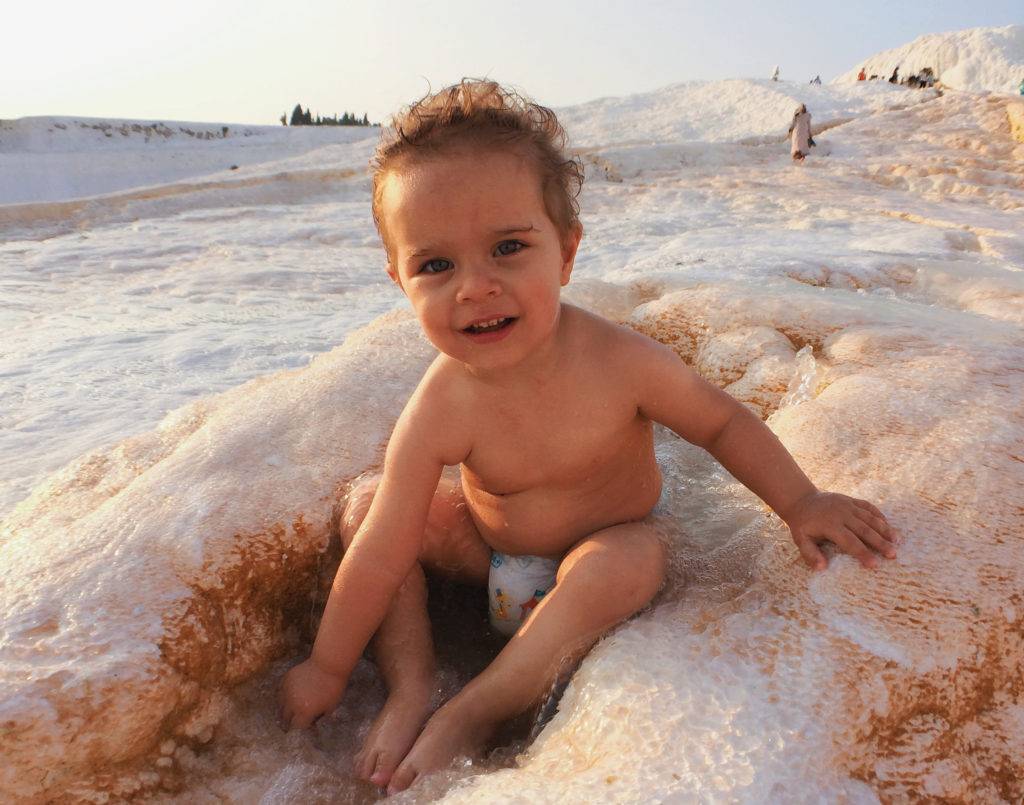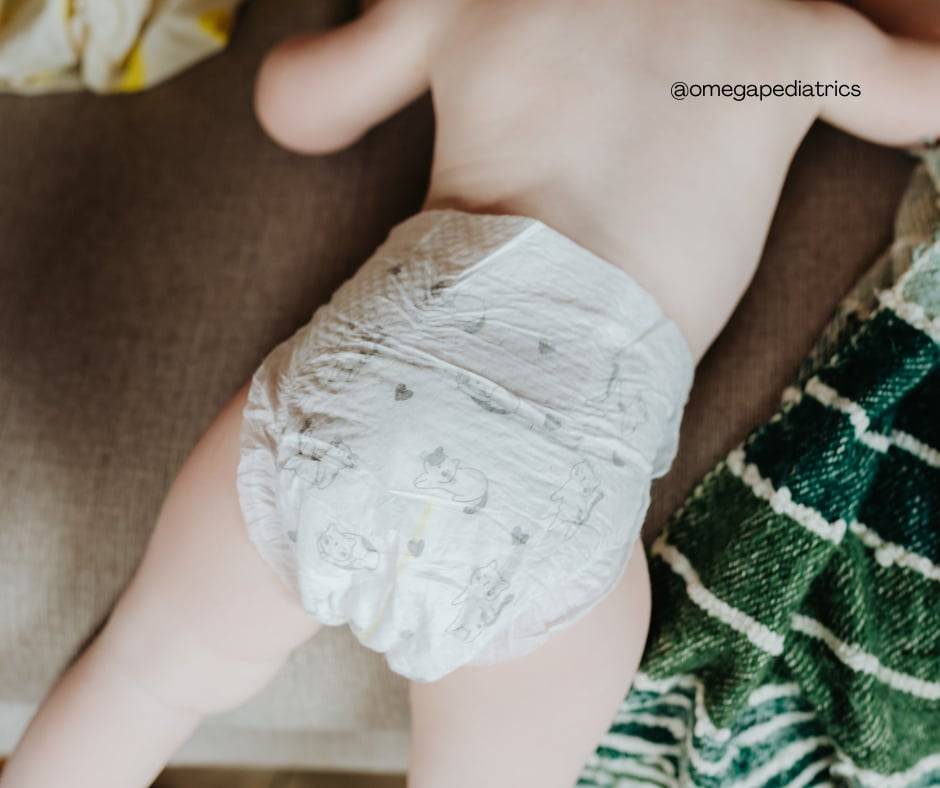Welcoming a newborn into your life is an exhilarating and sometimes overwhelming experience. Among the myriad decisions parents face is figuring out where to bathe newborn baby. Ensuring your baby’s bath time is safe and comfortable is crucial.
In this post, we’ll explore options for where to bathe newborn baby, providing parents with all the information they need to make the best choice for their family.
The Importance of Bathing Your Newborn
Bathing your newborn goes beyond cleanliness; it’s also an opportunity to bond with your baby, establish a routine, and provide sensory experiences. However, given a newborn’s delicate nature, ensure that bath time is safe and comfortable.
Bathing helps keep your baby’s skin healthy, prevents infections, and offers a chance for soothing touch and eye contact, essential for their emotional development.
Why Bathing is Essential
Bathing your newborn helps keep their skin clean and free from infections. It also allows you to check for rashes or other skin conditions. Moreover, the tactile sensation of water is soothing and helps your baby relax, promoting better sleep.
Frequency of Bathing
While keeping your newborn clean, it’s equally crucial not to overdo it. Bathing your newborn two to three times a week is generally sufficient. Overbathing dries out their delicate skin. In between full baths, you can clean your baby’s face, neck, and diaper area with a damp cloth. The latter is often referred to as a sponge bath.
Choosing the Right Place: Key Considerations
Before diving into the specific locations where you can bathe your newborn, consider these key factors:

Safety First: Make safety the top priority. Make sure the bathing area is secure and within your reach. Never leave your baby unattended during bath time. A secure bath seat or support provides additional safety, ensuring your baby stays in place to caution against accidental slipping and prolonged submerging in water.
Comfort: Choose a place where you and your baby are comfortable. The temperature of the water and the room should be just right. The water should be warm but not hot (around 100°F or 38°C), and the room should be free from drafts. A comfortable environment makes bath time more enjoyable for you and your baby.
Convenience: Opt for a location that’s convenient for you. This makes the process smoother and more enjoyable. Having everything you need within reach, such as towels, washcloths, and baby shampoo, is essential. A convenient setup helps you stay organized and reduces the chances of accidents.
Where to Bathe Newborn Baby: Options to Consider
1. Baby Bathtubs
These are specifically designed for newborns and infants, small in size so you can handily manage your little one while bathing.
Benefits of Baby Bathtubs
- Safety: Designed with safety features, such as a non-slip surface and built-in support, to keep your baby secure.
- Portability: Can be used anywhere in the house. Some have foldable options for easy storage and inflatable tubs for travel.
- Ease of Use: Often comes with ergonomic designs for the convenience of handling baby while bathing.
- Variety: Available in different styles and designs to suit your needs and preferences.
Tips for Using Baby Bathtubs
- Place the tub on a stable surface.
- Fill it with just a few inches of water.
- Always keep one hand on your baby.
- Ensure the bathtub is clean and free of sharp edges and corners.
- Use a bath thermometer to check the water temperature.
2. Kitchen Sink
Many parents find bathing their newborn in the kitchen sink convenient and comfortable.
Benefits of Kitchen Sink Baths
- Height: The sink’s height is perfect for reducing strain on your back, reducing the need to bend over.
- Size: Perfect size for newborns, spacious enough to comfortably handle your baby while bathing.
- Convenience: Close to a water source and counter space.
- Accessibility: Easy to reach all needed items.
Tips for Sink Baths
- Line the sink with a soft towel to prevent slipping.
- Ensure the faucet is turned away from the baby.
- Use a sink stopper to prevent accidents.
- Clean the sink thoroughly before each bath.
- Test the water temperature with your elbow or a thermometer.
3. Bathroom Sink
Similar to the kitchen sink, the bathroom sink can also be a good option for bathing your newborn, especially if it’s spacious and clean.
Benefits of Bathroom Sink Baths
- Accessibility: Close to essential bathroom supplies.
- Comfort: Comfortable height for parents.
- Safety: Smaller space for better control.
Tips for Bathroom Sink Baths
- Ensure the sink is clean and free of sharp edges.
- Use a non-slip mat or towel for added safety.
- Keep water temperature steady.
- Always stay within arm’s reach of your baby.
- Dry the outlying surfaces to prevent slipping.
4. Bathtub Insert
A bathtub insert is a small device that fits within your regular or adult bathtub, providing a safe and snug place for your newborn to bathe.
Benefits of Bathtub Inserts
- Safety: The built-in feature provides a safe and secure area within a larger tub.
- Versatility: Can be used as your baby grows.
- Stability: Reduces the risk of slipping, and cradles your baby securely while bathing.
- Comfort: Often padded for added comfort.
Tips for Bathtub Inserts
- Ensure the insert is properly secured.
- Monitor the water level closely.
- Keep the bathroom warm to avoid chills.
- Use gentle, baby-specific soap and shampoo.
- Rinse thoroughly to avoid soap residue.
5. Adult Bathtub
While not always recommended for newborns due to size and safety concerns, an adult bathtub can be used with proper precautions. Safety is still the priority.
Benefits of Adult Bathtubs
- Space: Plenty of room for your baby to move.
- Family Bonding: Parents can join in the bath for added bonding time.
- Multi-use: Can be used by older siblings or parents.
Tips for Using an Adult Bathtub
- Use a baby bath seat or support.
- Fill the tub with a shallow amount of water.
- Constantly supervise your baby.
- Place a non-slip mat in the tub.
- Keep bath toys within reach to entertain your baby.
Bathing Techniques for Newborns
Once you’ve chosen where to bathe newborn baby, know how to do it correctly. Here are some tips:
Preparation
- Gather all necessary items before starting.
- Ensure the room and water are at a comfortable temperature.
- Remove any jewelry or sharp items that could scratch your baby.
- Have a clean, dry towel ready for after the bath.
- Make sure all bathing supplies are within reach.
Bathing Steps
- Fill the Bath: Fill the tub or sink with a few inches of warm water.
- Undress Your Baby: Remove your baby’s clothes and diaper.
- Gently Place Your Baby in the Bath: Support your baby’s head and neck while placing them in the water.
- Wash Your Baby: Use a soft washcloth to gently clean your baby’s face, body, and hair.
- Rinse and Dry: Rinse off any soap and gently lift your baby out of the bath. Wrap them in a soft towel and dry thoroughly.
- Moisturize: Apply a gentle moisturizer to keep your baby’s skin soft.
- Dress Your Baby: Put your baby in clean, comfortable clothes.
Post-Bath Care
- Apply a gentle moisturizer to keep your baby’s skin soft.
- Dress your baby in clean, comfortable clothes.
- Clean and dry the bathing area.
- Check your baby’s skin for any signs of irritation or dryness.
- Ensure your baby is warm and comfortable after the bath.
Common Bathing Mistakes to Avoid
To ensure that bath time is always safe and enjoyable, avoid these common mistakes:
- Leaving Your Baby Unattended: Never leave your baby alone in the bath, even for a moment. Always keep one hand on your baby to prevent accidents. Accidents can happen quickly, so constant supervision is crucial.
- Using Too Much Water: Fill the tub or sink with just a few inches of water. Too much water increases the risk of drowning. Keeping the water level low ensures better control and safety.
- Water Temperature: Ensure the water is warm, not hot. Test the temperature with your elbow or a thermometer. Water that’s too hot burns your baby’s sensitive skin, while water that’s too cold makes them uncomfortable.
- Using Harsh Products: Use mild, baby-friendly soaps and shampoos. Harsh products irritate your baby’s sensitive skin. Look for products specifically formulated for newborns, free of artificial fragrances and dyes.
- Rushing the Process: Take your time during bath time. Rushing leads to mistakes and makes the experience stressful for you and your baby. A calm, unhurried approach helps create a positive bathing experience.
Tips for a Stress-Free Bath Time
Bath time can be a relaxing and enjoyable experience for you and your baby with these tips:
- Establish a Routine: A consistent bathtime routine helps your baby feel secure and relaxed. Try to bathe your baby at the same time each day. A routine helps signal your baby that it’s time to wind down and prepare for a bath.
- Make it Fun: Use bath toys and sing songs to make bath time enjoyable for your baby. A happy baby will be more cooperative during bath time. Bath time can be a playful and educational experience, helping your baby develop their senses and motor skills.
- Stay Calm: Babies can sense your emotions. Stay calm and relaxed to help your baby feel the same. A calm demeanor reassures your baby and helps them feel safe and secure.
- Keep Supplies Handy: Having all your bath supplies within reach prevents the need to leave your baby unattended. Organize your bathing area with towels, washcloths, soap, and shampoo within easy reach. Preparation is key to a smooth bath time.
- Involve Both Parents: Bath time is a wonderful bonding experience for parents. Taking turns or bathing together strengthens the family bond and provides support. Sharing this responsibility also allows parents to create special moments with their baby.
- Use a Soft Touch: Newborns have delicate skin, so use a gentle touch when washing them. Soft washcloths and a light touch prevent irritation and make bath time more enjoyable for your baby. Gentle handling builds trust and comfort between you and your baby.
- Talk to Your Baby: Talking or singing to your baby during bath time can be soothing and comforting. Your voice provides reassurance and helps your baby stay calm. Engaging with your baby through eye contact and gentle words creates a positive atmosphere.
- Monitor Water Temperature: Check constantly the water temperature to ensure it stays warm. Babies feel cold quickly, so maintaining the right temperature is important for their comfort. Adjust the water as needed to keep your baby warm and cozy.
When to Start Bathing Your Newborn
Many parents wonder when it’s safe to start bathing their newborn. It’s generally recommended to wait until the umbilical cord stump falls off and the navel area has healed. This typically happens within the first two weeks after birth. Until then, you can give your baby a sponge bath to keep them clean and comfortable.
Sponge Bath Tips
- Use a soft, damp washcloth to clean your baby.
- Pay special attention to the face, neck, and diaper area.
- Keep your baby warm by covering them with a dry towel while you wash one area at a time.
- Be gentle around the umbilical cord stump to avoid irritation
Make Bathtime a Special Bonding Moment with Your Newborn
Choosing where to bathe newborn baby is important and impacts their safety and comfort. The key is making bath time a secure and pleasant experience for you and your baby. Following the tips and guidelines, you can make bath time a special bonding moment with your newborn.
For more parenting tips and advice on newborn care, check out these helpful articles on Omegapediatrics.
- Bathing 101: Best Ways to Bathe Your Newborn
- Newborn Parenting: Exploring Common Guides and Tips for New Parents
Every baby is unique, and what works for one family might not work for another. Trust your instincts and enjoy these precious moments with your newborn. Bath time can become a cherished routine that fosters closeness and comfort for your growing family.






